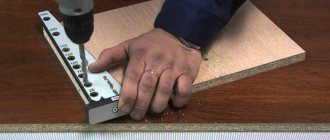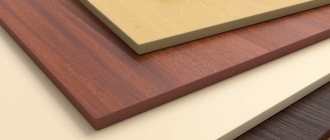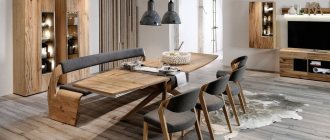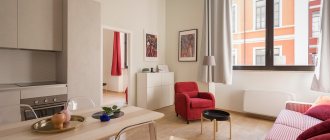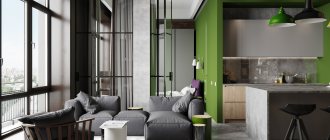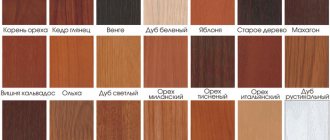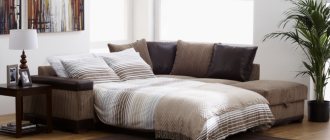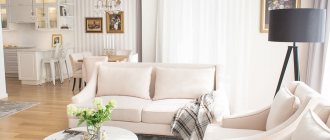Date: October 17, 2022 12:45
Today there is no shortage of furniture in stores. Anyone can choose the right model in various designs and colors. However, the quality often leaves much to be desired: the service life is short, use is uncomfortable, wooden structures dry out, and fabric upholstery fades. That is why businessmen who want to gain worthy authority in the furniture market have something to develop, and the process of producing high-quality furniture is promising and in demand. In addition, more and more people are inclined to make custom-made furniture. It is original, convenient, and shapes the face of every home.
What are the features of this business
The main share of furniture produced in Russia today is the result of the work of small or medium-sized companies: workshops, workshops, and individual craftsmen. Their products are divided into:
- cabinet furniture;
- intended for the office;
- kitchen models;
- soft;
- furniture for children's rooms;
- country assortment;
- specialized goods.
Moreover, each direction has its own fashion trends and popular elements. It is easier for small firms to comply with this condition, since it is there that new models can be quickly launched.
You should focus on demand based on who most often purchases it. Statistically analyzed that it is:
- young families, as well as those with children growing up;
- newly opened offices, cultural and educational institutions;
- residents of new residential areas, etc.
Story
In pre-revolutionary Russia, furniture production was semi-handicraft in nature. Large factories were concentrated in St. Petersburg, Riga, Kyiv, and Moscow.
The production of furniture on an industrial scale began in the 1950s. Most of the products satisfied only the needs of the domestic market.
With the transition to an open market, competition has increased. Enterprises had to modernize, adapting to new conditions. In most cases this was done successfully.
Where to start?
The organization of a furniture business should rely, first of all, on the professionalism of the craftsmen, their experience, initiative, and desire to improve the methods used. It is recommended to move forward in development gradually.
So, initially it is useful to work “to order”. In this case, there is no need to have large warehouses, and you do not need a lot of raw materials and consumables. However, in this case, it is important to have an understanding of customers and their needs in advance.
The business plan for a small furniture production at the next stage should contain advertising activities. Experts recommend using catalogs, booklets, and business cards outlining the advantages of a given manufacturer’s products. Online advertising is effective, especially on social networking sites.
It pays to maintain a retail outlet where your own products are sold, as well as transport that will deliver raw materials and finished goods to the store.
The opening of a furniture business is preceded by targeted methodological work. You need to carefully study publications that contain everything about the furniture business, get acquainted with the experiences and mistakes of other entrepreneurs, analyze offers on the market and the requests of potential buyers. It is useful to get a clear picture of competing companies operating in the selected area, the availability of suppliers of raw materials, and the possibility of purchasing modern equipment.
In a competitive world, it is important that the work is done by professionals. This will allow the company to gain its own authority. The business plan for the production of kitchen furniture also provides ways to compensate for the costs of utility bills and electricity.
Marketing policy
In a highly competitive market, the success of an enterprise depends on marketing activity.
First, you need to create your own brand, develop a logo, slogan, and attributes.
Secondly, it is better to develop a plan for promoting your product at the preparatory stage, so that when production starts, you can immediately begin advertising “bombardment” of potential consumers.
What can be done:
- place outdoor advertising on billboards;
- place image advertising in magazines;
- create a commercial for showing on TV;
- use the full potential of BTL advertising: promotions, distribution of leaflets, flyers, stands in furniture stores;
- create your own website with an online store;
- create groups on social networks, promote and support them;
- participate in exhibitions and fairs;
- find partner companies for mutual marketing (construction, furniture stores, cafes, studios).
What are the features of a business plan?
A business plan for furniture production, an example of which can be found on specialized websites, contains the following sections:
- What is the purpose of the enterprise; what products will be emphasized; technological features of production; when the payback of the goods produced is planned;
- Financial side of the activity: information on price offers, staff salaries ( accounting for a furniture store).
- The actual organization of the production process. The section specifies the location of facilities (rented space or private property), the availability of production equipment or the need to purchase it, and the formation of human resources.
- What target audience is the production aimed at?
- The desire to create our own retail network in which sales will take place. Working with individual customers is not excluded.
- Work aimed at advertising your own business. Planning of material costs for this area.
- Legal support of the company’s activities, starting from the moment of its registration.
An example of a business plan for a furniture store, built on these points, will help you avoid mistakes and unforeseen expenses.
Fillers
Upholstered furniture has also been influenced by progress and has undergone significant changes. First of all, innovations affected fillers.
Air
Air is one of the most used fillers for mattresses and poufs. Not a single material can compete with it in terms of cheapness and lightness, which makes it a favorite in this area.
To successfully use air fillers, it was necessary to improve the structures themselves, which previously had welded seams. Such seams on thick rubber or PVC quickly came apart even with careful and careful use. The load affected especially quickly when used by people with large weights. If you consider that such structures were practically not repaired, then you can understand how unjustified their acquisition was.
At the moment, seamless technology has been mastered, which has eliminated all previous shortcomings. Models produced on the modern market have a warranty period of at least 10 years.
Another useful feature is the ability to adjust the internal pressure, which allows you to change the rigidity of the product and adjust it in such a way as to meet the individual requirements of each customer.
Sintepooh
Filler in the form of light siliconized fiber made from artificial raw materials is very popular. There are several reasons for this:
- it springs perfectly and restores its original shape after deformation;
- does not interfere with air circulation;
- has low thermal conductivity;
- not afraid of getting wet;
- lightweight and non-toxic.
At the moment, it is actively used to fill decorative pillows, backs and armrests.
Features of the furniture business
Production of cabinet furniture
Without cabinet furniture, no room can be furnished. These are cabinets, pencil cases, tables, chests of drawers, whatnots, bedside tables and other products that have a hard surface, as well as a frame base. It is made from particle board (chipboard) by hot pressing wood chips and impregnation with binders or MDF. The difference in its production is dry pressing using high pressure. MDF is characterized by decorative properties, durability, and practicality.
A certain niche is occupied by furniture products made from solid wood. The natural nature of such material attracts those who value environmental friendliness and connection with nature. More often, solid wood of pine, birch, oak, walnut and other species are used. It is also possible to use “glued solids”, which are small fragments of wood firmly connected.
Inexpensive furniture is often made from laminated chipboards - double-sided laminated chipboards. They are lined with veneer or special paper.
Purpose and state of the industry
The furniture industry produces furniture for residential, public and office premises. A large share is made up of household products.
The industry produces products from solid wood and wood materials. Such products make up about 55% of the total market.
Production successfully survived the economic downturn of the 90s of the last century. For 2000-2004 there was an increase and a doubling of indicators. In subsequent years, its growth was 20%.
Both large and small enterprises are represented in the industry. There are about 6,000 furniture manufacturers in the country. Most have their own bases.
High competition contributes to the regular modernization of production, updating the technological base, and attracting highly qualified workers. And the policy of enterprises strives to cover the largest possible group of consumers in different price segments.
Russian-made furniture successfully competes with goods from Belarus, Poland, and China. Some enterprises export products to CIS countries.
What is the production technology of cabinet furniture
Experts distinguish the following types of production:
- A complete technological cycle, including all stages of work, from the preparation of raw materials to the actual production and delivery of products to customers. This stage is beneficial for a serial manufacturer, but labor-intensive for individual manufacturers and small workshops.
- Average technological cycle, excluding the stage of production of raw materials. The work performed includes cutting and assembly.
- Short cycle, distinguished by the production of finished parts. They are often cut to order.
Which cycle to choose for a particular production depends on the availability of equipment, the characteristics of the premises, qualified personnel, material resources and the intended customer segment.
Tabletops
A tabletop is a horizontal work surface on which people work all the time. Most office tables and budget dining options are equipped with a tabletop made of the same material as the table itself. For example, laminated chipboard 16 mm or 22 mm, with a 2 mm PVC edge. Special countertops are used in kitchens. Most often this is a sheet of chipboard with a thickness of 28-38 mm, which is covered with plastic using postforming technology. This type of plastic is durable. When the cut of the tabletop is gray, it is a simple chipboard; if it is blue-green, it is moisture resistant. According to the rules, the kitchen countertop must be equipped with a strip of silicone “drip catcher”, which prevents spilled liquids from flowing down. The weak point of such countertops is the edges of the cuts. They are edged with melamine to match the color of the tabletop. However, as you know, melamine is afraid of moisture, and the edge swells after a year of use. For this reason, experts recommend using an aluminum profile, which must be coated with silicone sealant before installation.
Kitchen countertops are sold equipped with a decorative corner that covers the gap between the countertop and the wall. It is worth opting for expensive aluminum corners with silicone seals that do not react to high humidity.
The highest quality countertops are made of natural or artificial stone. If they are made from natural stone, then they require additional care due to the porosity of the material. Whereas artificial stone is free of such disadvantages. In addition, countertops made of artificial stone can be of any size. However, such countertops are quite expensive.
If you decide to produce upholstered furniture...
Unlike cabinet furniture, upholstered furniture is often made by hand, using additional equipment, including sewing machines, upholstery devices, and fastening accessories. In addition, it is necessary to provide for the need for strong fastening of spring mechanisms, fasteners, fillers, etc. The quality of upholstered furniture largely depends on the class of upholstery materials, methods of fastening fabrics, mechanisms that ensure the strength of seams and joints of parts.
The production of upholstered furniture partially repeats the processes occurring in the manufacture of cabinet samples. However, only partially. Its manufacturing technologies have many specific aspects, knowledge of which determines the quality and service life of the produced models.
In addition to the correct manufacture of products, the authority of the furniture manufacturing enterprise, incl. small and medium scale, depends on the legal legitimacy of its activities.
Step-by-step instructions for making furniture with your own hands
I have been designing cabinet furniture so that people can make it with their own hands for quite some time now, remotely. Based on the questions that I get asked every time, one conclusion can be drawn - in order to make furniture with your own hands, step-by-step instructions are simply necessary . Off the top of my head, here are the questions I usually hear:
- Do you only do the design or will we also discuss where the shelves will be inside?
- Will you give us cut cards so we can order detailing?
- Will the cards indicate the holes needed for assembly? Who will make them?
- How will I know what accessories I will need to buy and what else I will need, will you tell me everything?
- Will there be drawings for assembly, or just a general design that you will draw for us?
The questions, in general, are understandable and logical if they were asked in the same sequence that I listed. This is usually not the case. Usually people are worried about how the most difficult stage will happen. And all other stages, no less important, are unconsciously “lost” from attention. This shouldn't happen. If you do not follow the step-by-step instructions, the process of making furniture with your own hands will turn into a chaotic and uncontrollable process. It’s not difficult for me to give out the whole heap of documentation. But, as practice shows, an unprepared person will simply get confused in it, abandon the very idea of somehow saving money and do everything himself. But in fact, you just had to stick to consistency. As they say, “appetite comes with eating.” It’s the same with furniture - it’s enough to start consistently taking certain actions and many frightening things will become understandable and elementary.
Registration is a mandatory condition for legal activities
A furniture manufacturing business can develop in two forms: LLC and individual entrepreneur. Which option to choose depends on individual characteristics, including:
expected scale of production;
- availability of equipment and production facilities;
- human resources potential;
- work to order.
The state assigns each type of activity its own code, for example, 36.12 - production of furniture for offices and commercial enterprises, 36.13 - kitchen furniture, etc.
51.47.11 – wholesale trade in furniture, 52.44.1 – retail.
Whatever type of activity is chosen, it is necessary to carry out state registration and obtain regulated permits. Upon receipt, information about the enterprise, its management, legal and actual address of activity, bank details, the amount of available capital, documents confirming payment of state duty, etc. are submitted to special authorities.
Profitability and payback of a mini-factory: financial plan with calculations
The amount of initial costs is 1.845 million rubles.
Each piece of furniture has its own cost and revenue. Let's take as an example the production of sliding wardrobes - products that are easy to design and manufacture. About 90-110 pieces can be produced in a month.
Let's set the price of the cabinet - 13,000 rubles. By selling all the furniture produced in a month, you can earn 1,170-1,430 million rubles.
The total monthly costs are 820 thousand rubles.
Net profit – 350-610 thousand rubles.
Under ideal conditions, the investment will pay off in 3-5.5 months. But at the initial stage, it is unlikely that it will be possible to sell all the furniture. So the actual payback period differs from the ideal one and depends on the effectiveness of marketing.
Table 2. Economic justification for the business idea.
| Basic indicators | Meaning |
| Initial investment amount | RUB 1.845 million |
| Monthly expenses | 820 thousand rubles. |
| Max. productivity per month | 90-110 pcs. |
| Monthly income | 1,170-1,430 million rubles. |
| Net profit per month | 350-610 thousand rubles. |
| Payback period | 3-5.5 months |
What to look for when choosing a room
The following criteria should be followed:
- whether the planned volume of output is large;
- how large the equipment is planned to be installed;
- what is the mechanism for purchasing and storing raw materials, what size warehouses will be required to store them;
- will the finished furniture be stored in warehouses or will it be produced for sale;
- how many jobs are planned to be created?
For example, if a business plan for the production of kitchen furniture contains a guideline for the production of serial products, a small workshop will be sufficient, which will be located in a small area, possibly under a lease agreement.
However, you should not underestimate the importance of compliance of the selected premises with current standards and rules. Thus, it is necessary to comply with fire safety requirements, have regulated communications, maintain microclimate parameters, equip areas for working with customers, staff work areas and sanitary rooms.
Furniture storage is a process that depends on internal and external weather factors. High humidity should not be allowed; it is advisable to ensure the air temperature in the room within the range of 18-20°C, protect materials from bright sunlight, etc.
When choosing a premises, it is important that it has convenient access roads and equipped areas for unloading and loading large cargo.
In some cases, they also resort to drawing up a business plan for a furniture store with free exhibition space.
Shop
For a small plant, a room measuring 100-120 square meters is suitable. m, divided into departments.
- Workshop workers:
- the production workshop contains basic equipment, machines for sawing, processing raw materials, and preparing components;
- in the assembly shop, products are assembled from prepared parts;
- All paint and varnish work is carried out in the paint shop, then the product is sent to the drying chamber.
- Stock. Divided into 2 zones - for finished products and for raw materials.
- Designer/engineer office.
- Staff area (rest room, locker room).
- Bathroom (toilet, shower).
The workshop should be located on the outskirts or in the industrial zone of the city, that is, outside the residential area. Inside you need to conduct 3-phase current, create a ventilation, heating, and fire safety system.
The plant must be adjacent to a vehicle access and a loading and unloading area.
A little about the equipment
In the furniture production process, the final result depends on how specialized and modern the equipment used is. You cannot do without the following machines and tools:
- electric type (drilling, milling, edge banding, turning, filler, grinding, cutting, sawing, facing, sewing, etc.);
- manual type (screwdrivers, staplers, carpentry, etc.).
In addition, production requires cutting tables, workbenches, and various types of shelving.
Modern furniture production relies on various computer programs, so appropriate equipment will be helpful (for example, a computer with the PRO-100 program). Using special programs, you can design new models, see and evaluate the proposed design of the room, and construct a sample of a new model.
Raw materials
It is necessary to draw up a list of necessary components in advance and find suppliers of materials.
During production you will need:
- MDF and laminated chipboards;
- sheets of fiberboard, OSB, multilayer plywood (regular, laminated);
- paints and varnishes, adhesives;
- steel and aluminum profiles;
- roof rails;
- self-adhesive films;
- accessories;
- hardware;
- glass, stained glass.
MDF boards and laminated chipboards are needed for the manufacture of economy-class furniture; for expensive products, solid wood is used.
You need to save money to purchase quality software. Computer programs allow you to develop an accurate drawing of a furniture set and visualize it in three-dimensional form. Designers need such programs: they allow you to create cutting maps for sheet materials, increasing production efficiency and minimizing waste.
Examples of such programs: “Astra Cutting”, “MASTER”, Cutting, PRO-100, T-FLEX Furniture.
How to select staff
It is possible to produce furniture alone, but the volumes will not be large. Therefore, you need to select personnel wisely. Regardless of how many or few people are planned to be involved, they must have the appropriate qualifications and experience. In a small enterprise, it is recommended to hire 10-12 employees, including a director, designer, customer service manager, support workers, and furniture makers. Saving on staff can lead to combining positions. For example, a director can work with customers, and an accountant can manage logistics.
To ensure that staff value their jobs, it is necessary to ensure compliance with safety regulations and provide employees with personal protective equipment.
Office
In addition to the premises for production, it is necessary to create a representative office of the company. Here sales managers will serve clients and conclude contracts.
Of course, you can place the office and the plant itself in one place, but it is worth remembering: production is noisy, it cannot be located in a public area, and traveling to an office on the outskirts is inconvenient for customers.
It’s better to rent an office in a convenient city location, renovate it, hang professional photographs of your furniture, or even set up an exhibition stand with products and samples of materials.
You can open your own company store (together with an office). It will also perform advertising functions - that is, act as a live stand.
Machining the ends of parts
The outer ends of the parts must be covered with a special edge tape, which will cover the unaesthetic cut and serve as an obstacle to moisture getting inside the chipboard. Pasting is carried out on a special edge banding machine, where gluing occurs with heating, which means that the requirements of cabinet furniture manufacturing technology are met.
In the absence of a machine, the edge is heated with an iron or an industrial hair dryer, but in this case there is no talk of decent quality due to uneven heating. On the machine, simultaneously with gluing, the edge is trimmed if its width is too large. When gluing with an iron, trimming is done manually with a shoe knife, which sometimes leads to the formation of burrs on the edge. Therefore, a mandatory step in gluing the edges is sanding the cuts with fine sandpaper until completely smooth.
Cutting blanks
Modern furniture, as a rule, is made from wood panels, so an important stage in its production is cutting - the process of cutting out parts from a solid chipboard board. It is best to do this using a cutting machine, since it will cut the slab with maximum accuracy. The cutting is carried out in accordance with the drawing, the chipboard sheet is pre-marked to the dimensions of the parts. Curvilinear sections are cut with a jigsaw.
